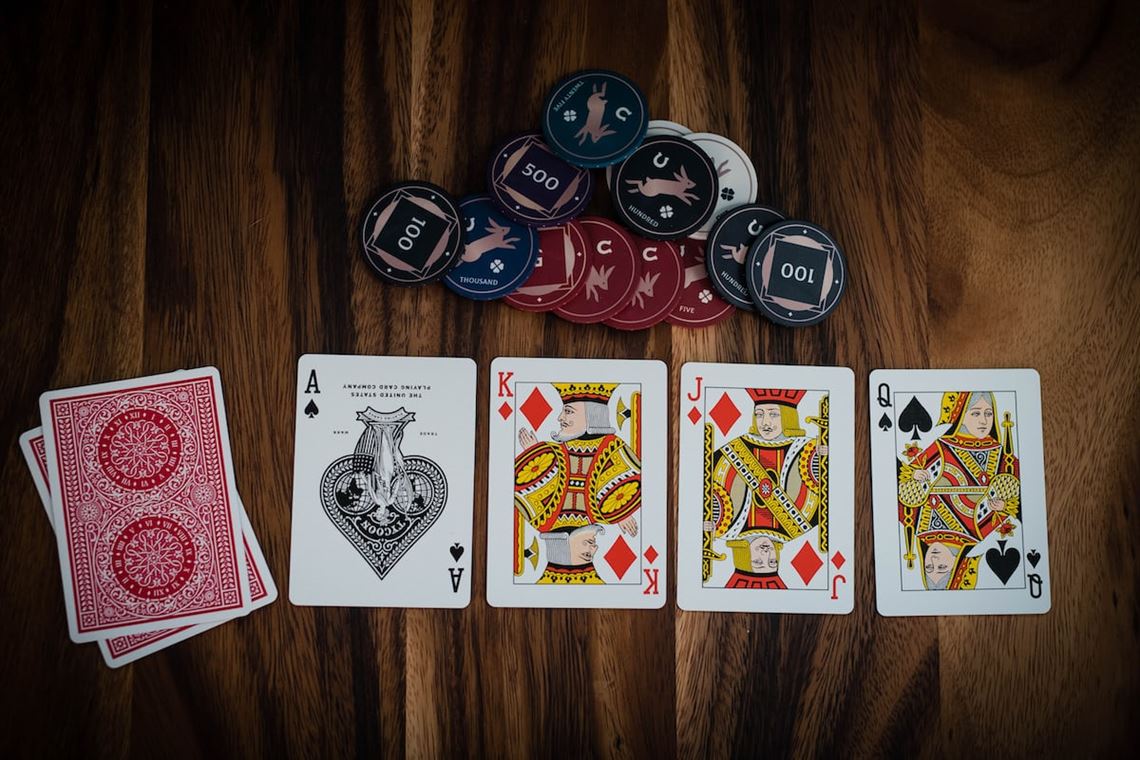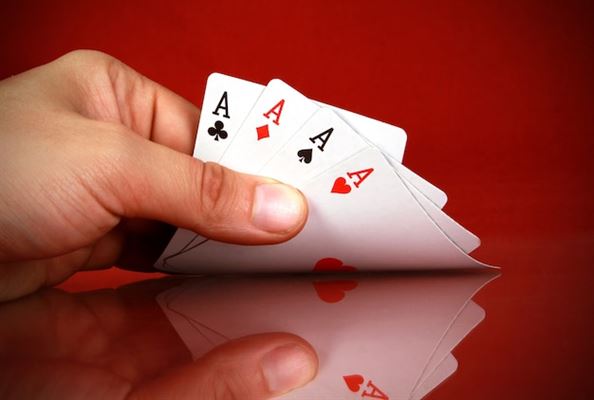“Cracking the Code: Advanced Strategies for Winning Poker Tournaments” is a comprehensive guide that delves into the intricacies of poker tournament play. This guide offers advanced strategies and techniques to help players elevate their game and increase their chances of success in poker tournaments. Whether you are a seasoned player looking to refine your skills or a beginner seeking to gain a competitive edge, “Cracking the Code” provides valuable insights and practical advice to enhance your tournament performance.
Mastering the Art of Bluffing: Strategies for Winning Poker Tournaments
To effectively bluff in poker tournaments, it is essential to understand the different types of bluffs and when to use them. The most common type of bluff is the pure bluff, where you have absolutely nothing in your hand but still bet or raise aggressively. This type of bluff is risky but can be highly rewarding if executed correctly. It is important to choose the right moment to make a pure bluff, such as when you have a tight table image or when the board cards do not favor your opponents’ likely hands.
Another type of bluff is the semi-bluff, which involves betting or raising with a hand that has the potential to improve in later rounds. This type of bluff is less risky than a pure bluff because you have some equity in the hand. For example, if you have a flush draw, you can semi-bluff by betting or raising, putting pressure on your opponents while also giving yourself a chance to hit your flush.
Timing is crucial when it comes to bluffing in poker tournaments. It is important to pay attention to your opponents’ playing styles and tendencies. If you notice that a particular player is easily intimidated or tends to fold frequently, it may be a good opportunity to bluff. On the other hand, if you are up against a player who rarely folds and seems to call every bet, bluffing may not be the best strategy.
Another important aspect of bluffing is your table image. Your table image is how your opponents perceive you based on your previous actions and behavior at the table. If you have been playing tight and only showing strong hands, your opponents are more likely to believe your bluffs. However, if you have been caught bluffing multiple times, your table image may be damaged, making it harder to successfully bluff in the future.
Bluffing is not just about the cards you hold; it is also about the way you present yourself at the table. Body language and facial expressions can give away your intentions, so it is crucial to maintain a calm and composed demeanor. Avoid giving any tells that may reveal the strength or weakness of your hand. Practice controlling your emotions and maintaining a poker face to keep your opponents guessing.
Analyzing Player Tells: How to Gain an Edge in Poker Tournaments
One of the first things to keep in mind when analyzing player tells is that everyone has them. Whether it’s a slight twitch, a change in breathing pattern, or a nervous tick, these subtle cues can reveal a lot about a player’s hand and their level of confidence. By paying close attention to these tells, you can make more informed decisions and increase your chances of success.
To effectively analyze player tells, it’s crucial to establish a baseline for each opponent. This means observing their behavior when they are not involved in a hand. By doing so, you can identify their natural tendencies and distinguish between genuine tells and intentional deception. It’s important to note that not all tells are reliable indicators, as some players may deliberately try to mislead their opponents. However, by establishing a baseline, you can better discern when a tell is genuine or a bluff.
Another key aspect of analyzing player tells is understanding the context in which they occur. Different situations can elicit different reactions from players, and being able to interpret these reactions accurately is essential. For example, a player who is normally calm and composed may exhibit signs of nervousness when facing a large bet. Conversely, a player who is known for bluffing may display signs of confidence to deceive their opponents. By considering the context, you can make more accurate judgments about the strength of your opponents’ hands.
In addition to observing physical tells, it’s also important to pay attention to verbal cues. Players often reveal valuable information through their words, whether it’s a subtle change in tone or the choice of words themselves. For instance, a player who hesitates before making a bet may be uncertain about the strength of their hand. Similarly, a player who confidently declares they have a strong hand may be trying to intimidate their opponents. By listening carefully to what your opponents say, you can gain valuable insights into their thought process and adjust your strategy accordingly.
While analyzing player tells can provide valuable information, it’s important to remember that it’s just one piece of the puzzle. It should be used in conjunction with other strategies, such as understanding the odds, managing your bankroll, and adapting to different playing styles. By combining these elements, you can develop a well-rounded approach that maximizes your chances of success in poker tournaments.
The Importance of Positioning: Maximizing Your Chances of Winning Poker Tournaments
One of the key advantages of being in a late position, such as the dealer button or the seats to its right, is having more information available to you. When you act last in a betting round, you have the advantage of seeing how your opponents have acted before making your decision. This allows you to gather valuable information about their hand strength and intentions, giving you a better understanding of the overall dynamics of the hand. Armed with this knowledge, you can make more accurate assessments and adjust your strategy accordingly.
Conversely, being in an early position, such as the small blind or the seats to its left, can be a disadvantage. In these positions, you have less information to work with, as most of your opponents have yet to act. This lack of information can make it more challenging to make informed decisions, as you are essentially playing blind. As a result, it is generally advisable to play more cautiously from early positions, as the risk of running into stronger hands is higher.
Another crucial aspect of positioning is the ability to control the size of the pot. When you are in a late position, you have the opportunity to manipulate the pot size by choosing whether to bet, raise, or call. By carefully considering the actions of your opponents and the strength of your hand, you can strategically adjust the pot size to your advantage. For example, if you have a strong hand and your opponents have shown weakness, you can raise to build the pot and extract more value. Conversely, if you have a marginal hand and your opponents have shown strength, you can choose to fold and minimize your losses.
Furthermore, positioning can also influence the range of hands you choose to play. In late positions, where you have more information and control over the pot size, you can afford to play a wider range of hands. This is because you have a better understanding of the overall hand strength and can exploit the weaknesses of your opponents. However, in early positions, where you have less information and are more likely to face stronger hands, it is generally advisable to play a tighter range of hands to minimize risk.
Developing a Solid Tournament Strategy: Tips for Consistent Success in Poker
One of the first things to consider when developing a tournament strategy is your starting hand selection. While it may be tempting to play every hand and hope for the best, this is a surefire way to quickly deplete your chip stack. Instead, focus on playing premium hands and avoid getting involved in marginal situations. This will help you preserve your chips and give you a better chance of making it to the later stages of the tournament.
Another important aspect of tournament strategy is understanding the concept of pot odds. Pot odds refer to the ratio of the current size of the pot to the cost of a contemplated call. By calculating pot odds, you can determine whether or not a particular hand is worth playing. If the pot odds are greater than the odds of completing your hand, it may be a profitable decision to make the call. However, if the pot odds are lower than the odds of completing your hand, it is generally best to fold.
In addition to pot odds, it is crucial to be aware of your position at the table. Your position in relation to the dealer button can greatly impact the strength of your hand. Generally, the later your position, the more hands you can play. This is because you have more information about the actions of your opponents before you have to make a decision. Conversely, if you are in an early position, it is advisable to play more cautiously and only enter pots with premium hands.
Bluffing is another important aspect of tournament strategy. While bluffing can be a powerful tool, it should be used sparingly and with caution. Bluffing works best when you have a tight table image and your opponents perceive you as a conservative player. By carefully selecting your bluffing opportunities and reading your opponents’ reactions, you can successfully deceive them and win pots that you would otherwise have no chance of winning.
Lastly, it is crucial to be adaptable and adjust your strategy as the tournament progresses. As the blinds increase and the field narrows, the dynamics of the game change. It is important to recognize these changes and adjust your play accordingly. For example, as the blinds increase, you may need to become more aggressive and steal pots to maintain your chip stack. Similarly, as the field narrows, you may need to tighten up your starting hand selection and avoid unnecessary risks.
Adapting to Different Tournament Formats: Strategies for Winning in Various Poker Tournaments
One of the most common tournament formats is the freezeout tournament, where players start with a fixed number of chips and play until they run out. In this format, it is crucial to manage your chip stack effectively. As the blinds increase, you must be willing to take calculated risks to accumulate chips. However, it is also important to avoid unnecessary confrontations that could lead to your elimination. Patience and discipline are key in freezeout tournaments.
Another popular format is the rebuy tournament, where players have the option to buy more chips if they bust out. In these tournaments, it is essential to take advantage of the rebuy period to build a big stack. This means being more aggressive and willing to take risks early on. However, once the rebuy period ends, the dynamics of the tournament change. Players who have not rebought may be more cautious, and it is important to adjust your strategy accordingly. Focus on preserving your stack and picking your spots carefully.
The shootout tournament is a format where players must win their table to advance to the next round. In these tournaments, it is crucial to play a tight and aggressive style. Since only one player from each table advances, you must be willing to take risks to accumulate chips and put pressure on your opponents. However, as the tournament progresses and tables merge, the dynamics change. At this stage, it is important to adjust your strategy and be more selective with your hands. Focus on exploiting the weaknesses of your opponents and avoid unnecessary confrontations.
The bounty tournament is another popular format where players receive a cash prize for eliminating other players. In these tournaments, it is important to adjust your strategy based on the size of the bounties. If the bounties are significant, it may be worth taking more risks to try and eliminate players. However, if the bounties are small, it is better to focus on accumulating chips and preserving your stack. Additionally, in bounty tournaments, it is important to be aware of your own bounty. Other players may target you to try and claim your bounty, so be prepared to defend your chips when necessary.
Lastly, the satellite tournament is a format where players compete for a seat in a larger, more prestigious tournament. In these tournaments, the goal is not necessarily to win, but rather to secure a seat. This means playing a more conservative style and avoiding unnecessary risks. Focus on surviving and accumulating enough chips to secure your seat. Once you have secured your seat, you can adjust your strategy to be more aggressive and play for the win.
In conclusion, adapting to different tournament formats is crucial for success in poker tournaments. Whether it is managing your chip stack effectively, adjusting your strategy based on the dynamics of the tournament, or exploiting the specific rules of the format, being able to adapt is key. By understanding the nuances of each format and implementing the appropriate strategies, you can increase your chances of winning in various poker tournaments.




